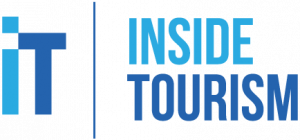The International Air Transport Association has announced a moderate rebound in air travel in September 2021 compared to August’s performance.
This was driven by recovery in domestic markets, in particular China, where some travel curbs were lifted following the COVID-19 outbreaks in August. International demand, meanwhile, slipped slightly compared to the previous month.
Because comparisons between 2021 and 2020 monthly results are distorted by the extraordinary impact of COVID-19, unless otherwise noted all comparisons are to September 2019, which followed a normal demand pattern.
Total demand for air travel in September 2021 (measured in revenue passenger kilometers or RPKs) was down 53.4 per cent compared to September 2019. This marked an uptick from August, when demand was 56.0 per cent below August 2019 levels.
Domestic markets were down 24.3 per cent compared to September 2019, a significant improvement from August 2021, when traffic was down 32.6 per cent versus two years ago. All markets showed improvement with the exception of Japan and Russia, although the latter remained in solid growth territory compared to 2019.
International passenger demand in September was 69.2 per cent below September 2019, fractionally worse than the 68.7 per cent decline recorded in August.
"September’s performance is a positive development but recovery in international traffic remains stalled amid continuing border closures and quarantine mandates. The recent US policy change to reopen travel from 33 markets for fully vaccinated foreigners from 8 November is a welcome, if long overdue, development. Along with recent re-openings in other key markets like Australia, Argentina, Thailand, and Singapore this should give a boost to the large-scale restoration of the freedom to travel," says IATA director general Willie Walsh.
International Passenger Markets
European carriers’ September international traffic declined 56.9 per cent versus September 2019, down 1 percentage point compared to the 55.9 per cent decrease in August versus the same month in 2019.
Capacity dropped 46.3 per cent and load factor fell 17.2 percentage points to 69.6 per cent.
Asia-Pacific airlines saw their September international traffic fall 93.2 per cent compared to September 2019, virtually unchanged from the 93.4 per cent drop registered in August 2021 versus August 2019 as the region continues to have the strictest border control measures. Capacity dropped 85.2 per cent and the load factor was down 42.3 percentage points to 36.2 per cent, easily the lowest among regions.
Middle Eastern airlines had a 67.1 per cent demand drop in September compared to September 2019, slightly improved over the 68.9% decrease in August, versus the same month in 2019. Capacity declined 52.6 per cent, and load factor slipped 23.1 percentage points to 52.2 per cent.
North American carriers experienced a 61.0 per cent traffic drop in September versus the 2019 period, somewhat improved on the 59.3 per cent decline in August compared to August 2019. Capacity dropped 47.6 per cent, and load factor fell 21.3 percentage points to 61.9 per cent.
Latin American airlines saw a 61.3 per cent drop in September traffic, compared to the same month in 2019, an upturn over the 62.6 per cent decline in August compared to August 2019. September capacity fell 55.6 per cent and load factor dropped 10.7 percentage points to 72.0 per cent, which was the highest load factor among the regions for the 12th consecutive month.
African airlines’ traffic fell 62.2 per cent in September versus two years’ ago, almost 4 percentage points worse than the 58.5 per cent decline in August compared to August 2019. September capacity was down 49.3 per cent and load factor declined 18.4 percentage points to 53.7 per cent.
Domestic Passenger Markets
Brazil’s domestic market sustained its gradual recovery amid positive vaccination progress. Traffic was down 17.3 per cent compared to September 2019 – improved from a 20.7 per cent fall in August.
Japan’s September domestic traffic was down 65.5 per cent, worsened from a 59.2 per cent decline in August versus August 2019, owing to the impact of restrictions.
The Bottom Line
"Each re-opening announcement seems to come with similar but different rules. We cannot let the recovery get bogged down in complication. The ICAO High Level Conference on COVID-19 agreed that harmonization should be a priority. The G20 declared a commitment to take action to support a recovery with seamless travel, sustainability, and digitalization. Now governments must put actions behind these words to realize simple and effective measures. People, jobs, businesses and economies are counting on real progress," says Willie.
IATA’s vision for safely re-establishing global connectivity is based on five key principles:
- Vaccines should be available to all as quickly as possible
- Vaccinated travelers should not face any barriers to travel
- Testing should enable those without access to vaccines to travel without quarantine
- Antigen tests are the key to cost-effective and convenient testing regimes, and
- Governments should pay for testing, so it does not become an economic barrier to travel


